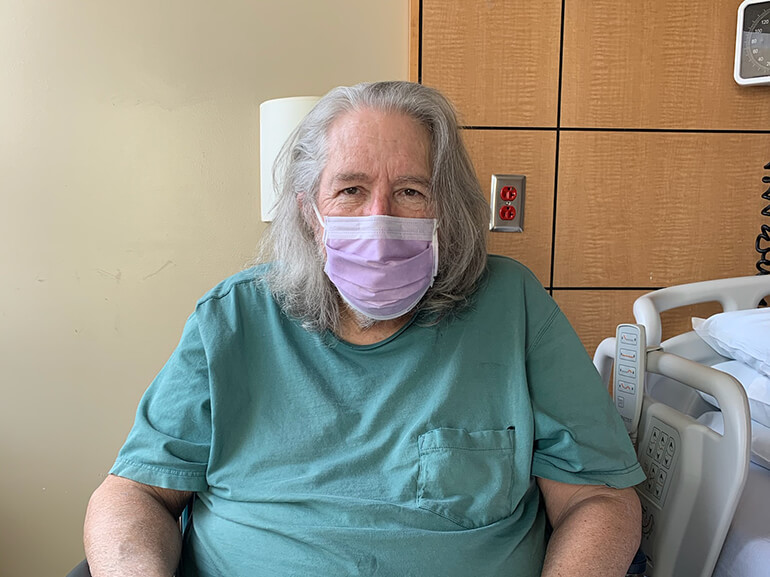John's story

John Hertzog, 72, is an avid gun collector who likes to read science-fiction books and news magazines. The retired construction manager also enjoys spending time with his beloved pit bull, Natasha, as well as his three grandsons, two granddaughters and a number of great grandchildren. Like most people, John was optimistic about what the new year would bring, until a stroke changed everything.
It all started on New Year’s Day when John went to the kitchen for a snack. He tried to sit on a chair, but ended up falling to the floor, unable to get up. Thankfully, his grandson, Troy, was in the next room and quickly called 911. John was taken by ambulance to Penn State Health Milton S. Hershey Medical Center.
In the emergency department, the medical team performed an MRI, CT scan and lab work, which confirmed John had a stroke. The team quickly administered tPA, a clot-busting medication.
After one week, John was ready for the next step in his recovery and transferred to Helen M. Simpson Rehabilitation Hospital. When he arrived, John had vision problems, cognitive deficits, decreased strength and endurance, weakness on the left side of his body, difficulty walking and the inability to complete self-care tasks. John set primary goals of returning home with the ability to get around independently.
In occupational therapy, John worked on balance and standing posture, which was important to become independent in self-care tasks, such as dressing and showering. After two weeks, John was able to shower by himself, which was a huge accomplishment. One of John’s biggest challenges was left-sided spatial neglect, a condition that prevents many stroke survivors from sensing or “seeing” things on the affected side of their body. It isn’t a vision issue, but rather a deficit in perception and attention that John was able to improve through prism adaptation therapy.
Physical therapists started with bed mobility and making sure John was able to safely get in and out of bed. From there, they focused on getting John walking again. Initially, he needed the assistance of three people just to be able to take a few small steps. Sessions continued and John built up more strength, eventually allowing him to walk while weaving between objects and within narrow spaces to simulate what he might encounter when returning home. John also worked on curb stepping, navigating stairs and getting in and out of a car. The progress John made each day motivated him to keep going and get home sooner. “The first time I walked 100 feet with the walker was probably my biggest accomplishment,” said John. It was a great feeling when I was able to do that.”
John also worked with speech therapists during his stay to improve his attention to tasks. They utilized exercises to help with memory and organization of information. To help with his visual deficits, they worked on visual highlighting and finger scanning to improve eye gaze and tracking to the left side during reading comprehension tasks.
John’s grandson, Troy and his granddaughter, Liz, attended Care Partner meetings to discuss John’s goals and progress during his rehabilitation. Troy also participated in hands-on family training since he would be helping John when he returned home.
After three weeks at Helen M. Simpson, John was ready to return home to his family. He had progressed from needing two or three people for all aspects of mobility and self-care to just needing supervision. “Everything is going much better,” said John. “I was able to get my walking and vision straightened out. I feel as though I am ready to go home now.”